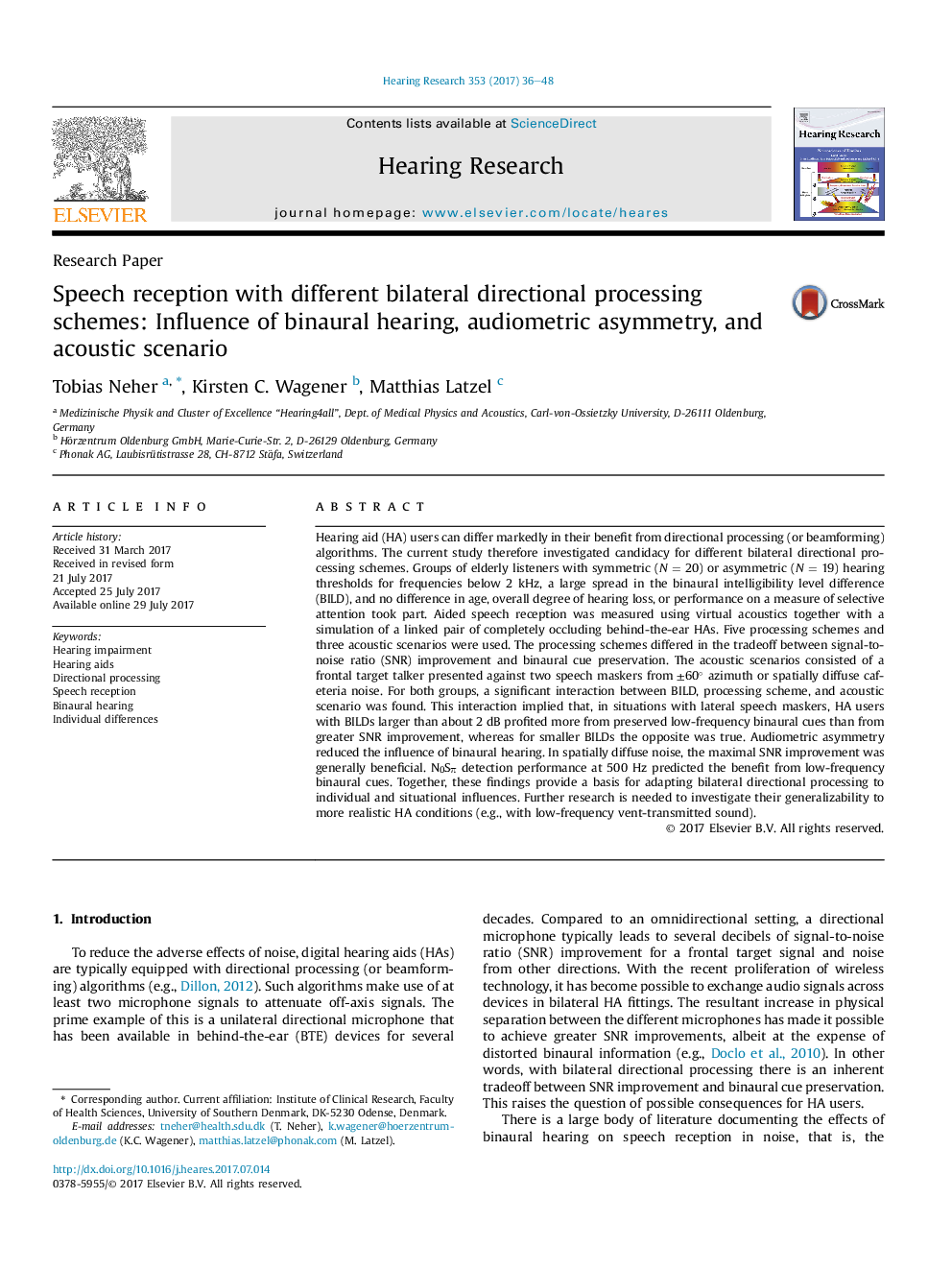| کد مقاله | کد نشریه | سال انتشار | مقاله انگلیسی | نسخه تمام متن |
|---|---|---|---|---|
| 5739332 | 1615547 | 2017 | 13 صفحه PDF | دانلود رایگان |
- Binaural hearing, audiometric asymmetry, and acoustic scenario influence speech reception with bilateral directional processing.
- For lateral speech maskers, binaural hearing modulates benefit from preserved low-frequency binaural cues.
- For spatially diffuse noise, maximal signal-to-noise ratio improvement is beneficial.
- Audiometric asymmetry <2Â kHz reduces the influence of binaural hearing.
- N0SÏ detection at 500Â Hz predicts benefit from low-frequency binaural cues.
Hearing aid (HA) users can differ markedly in their benefit from directional processing (or beamforming) algorithms. The current study therefore investigated candidacy for different bilateral directional processing schemes. Groups of elderly listeners with symmetric (N = 20) or asymmetric (N = 19) hearing thresholds for frequencies below 2 kHz, a large spread in the binaural intelligibility level difference (BILD), and no difference in age, overall degree of hearing loss, or performance on a measure of selective attention took part. Aided speech reception was measured using virtual acoustics together with a simulation of a linked pair of completely occluding behind-the-ear HAs. Five processing schemes and three acoustic scenarios were used. The processing schemes differed in the tradeoff between signal-to-noise ratio (SNR) improvement and binaural cue preservation. The acoustic scenarios consisted of a frontal target talker presented against two speech maskers from ±60° azimuth or spatially diffuse cafeteria noise. For both groups, a significant interaction between BILD, processing scheme, and acoustic scenario was found. This interaction implied that, in situations with lateral speech maskers, HA users with BILDs larger than about 2 dB profited more from preserved low-frequency binaural cues than from greater SNR improvement, whereas for smaller BILDs the opposite was true. Audiometric asymmetry reduced the influence of binaural hearing. In spatially diffuse noise, the maximal SNR improvement was generally beneficial. N0SÏ detection performance at 500 Hz predicted the benefit from low-frequency binaural cues. Together, these findings provide a basis for adapting bilateral directional processing to individual and situational influences. Further research is needed to investigate their generalizability to more realistic HA conditions (e.g., with low-frequency vent-transmitted sound).
Journal: Hearing Research - Volume 353, September 2017, Pages 36-48
